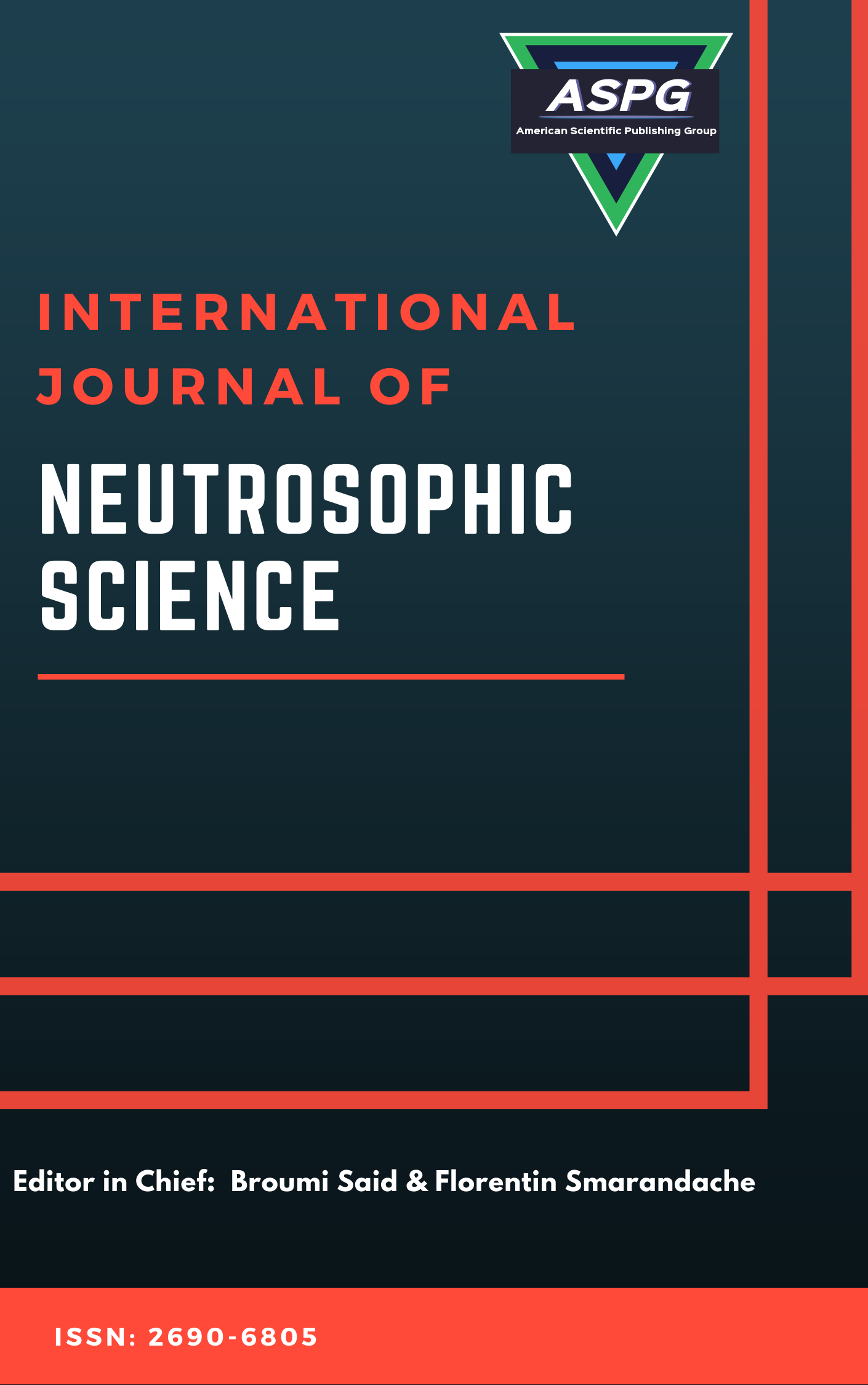

Volume 27 , Issue 2 , PP: 466-473, 2026 | Cite this article as | XML | Html | PDF | Full Length Article
Muhammad Eid BALBAA 1 * , Ebru Ozbilge 2 , Emre Ozbilge 3
Doi: https://doi.org/10.54216/IJNS.270237
Mathematically, this study aims to analyze the dynamic linkage between economic growth and sustainable development by employment of integrated econometric–neutrosophic approach. Standard econometric models typically fail to address the risk, ambiguity and multi-dimensionality of sustainability indicators. In comparison, the neutrosophic approach – based on truth, indeterminacy and falsity – provides a solid tool for expressing uncertainty and vagueness with respect to socio-economic assessments. The article creates the ability to use quantitative data together with indeterminacy level (neutrosophic decision making) for evaluating a more complete effort of the sustainability–growth continuum, i.e., beyond only measurable results we evaluate confidence and indeterminacy embedded within them which can be seen by policy makers. Empirical evidence comes from a transition economy characterized by the significant structural reforms and modernization over recent years that clearly shows how strong economic growth can be accompanied by continuing environmental pressures. We compare the official statistics with regards to GDP growth and CO2 emissions per capita that are predicted from 2018 till 2023, in order to analyze whether environmental sustainability develops in line with economic development. Results show that the economy is resilient and growing consistently, while environmental performance is mixed, indicating partial decoupling of growth from sustainability.
Neutrosophic analysis , Economic growth , Sustainable development , Uncertainty modeling , Transition economies
[1] M. Abdel-Basset, A. Atef, and F. Smarandache, "Neutrosophic multi-criteria applied to sustainability evaluation," Sustainability, vol. 14, no. 7, 2022.
[2] M. A. Khan and A. Alshahrani, "AI and business processes," 2023.
[3] Y. Li and Z. Wang, "Machine learning and decision-making," 2024.
[4] M. E. Balbaa, "Socio-Economic Indicators and their Impact on Sustainable Economic Development: An In-depth Analysis of Egypt," International Journal of Economics and Financial Issues, vol. 14, no. 2, pp. 136–145, 2024, doi: 10.32479/ijefi.16016.
[5] I. Deli and F. Smarandache, "Neutrosophic sets in economics: A comprehensive review," Journal of Intelligent Systems, 2021.
[6] F. Farooq et al., "Growth–emissions relationship in Central Asia: EKC analysis," Energy Economics, vol. 97, 2021.
[7] P. Sadorsky, "Transition economies and the sustainability–growth nexus," Environmental Research Letters, 2022.
[8] F. Smarandache, Neutrosophy: Neutrosophic Probability, Set, and Logic. American Research Press, 1998.
[9] UNEP, "Central Asia climate resilience report," 2023.
[10] World Bank, "Uzbekistan Economic Update," 2024.